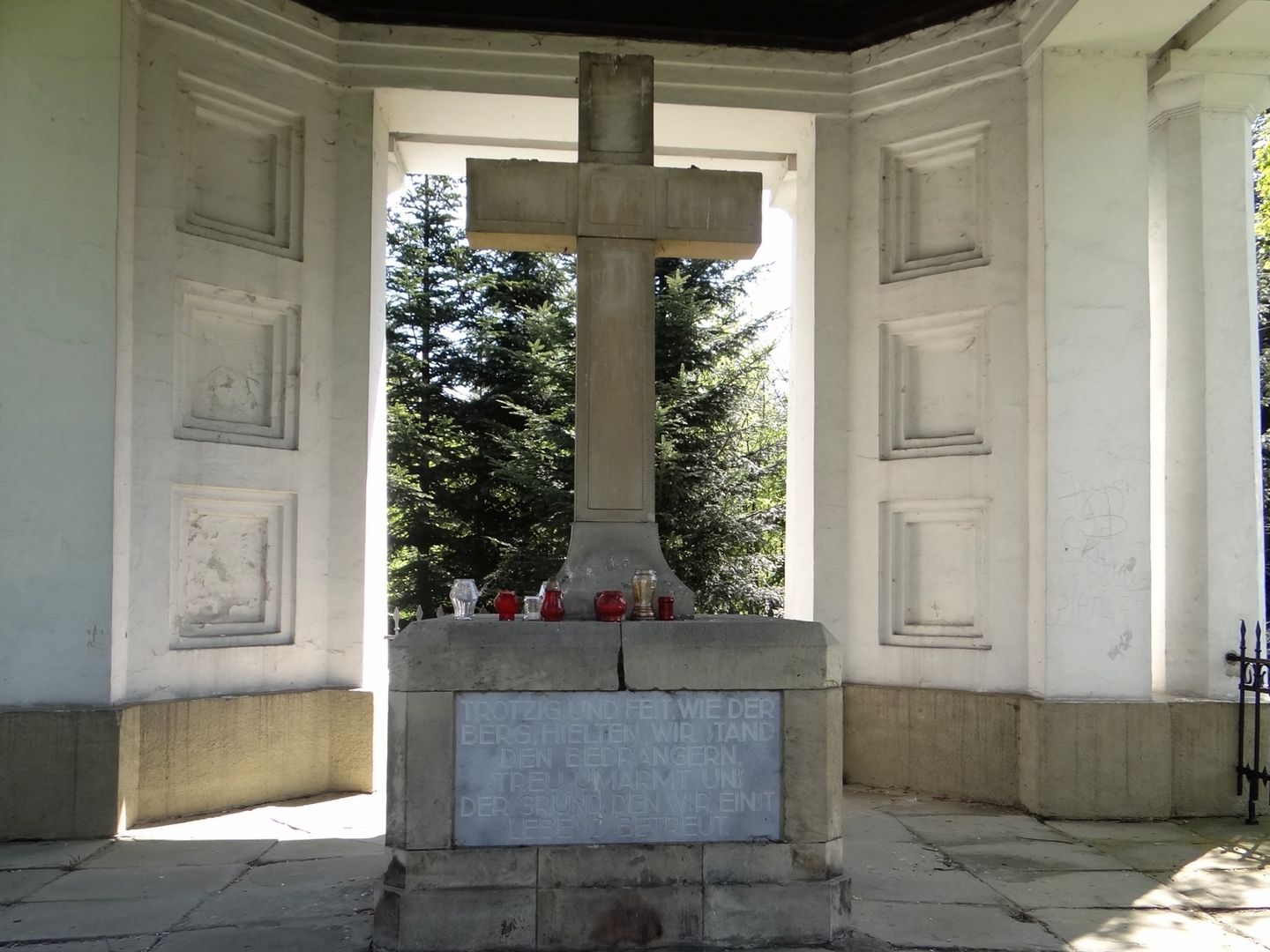War Cemetery No. 192 – Lubcza
7.07

Overview
War Cemetery No. 192 in Lubcza, situated on a hill at the edge of the forest, is one of the larger cemeteries in the Tarnów district, designed by Gustav Rossmann. Its fencing is varied, consisting of a stone wall as well as metal and wooden fences, with the main entrance being a double-winged metal gate set on stone pillars. The central feature of the cemetery is a 17-meter-high neo-Renaissance chapel with an inscription in German, which, when translated, speaks of the soldiers' resilience and struggle. Although the cemetery was established as a memorial site after World War I, initially with a wooden chapel built in 1915, it later took on its current form through new constructions. Further development and renovation of the cemetery took place from the 1990s onward, and in 2005, it was declared a historical monument. In 2018, the cemetery was in very good condition. This cemetery embodies not only local history but also cultural diversity, as the Austro-Hungarian soldiers buried here came from various nationalities, a fact reflected in the forms of the tombstones, including steles and Lorraine crosses differing in shape and ornamentation. The cemetery is the final resting place of 457 Austro-Hungarian soldiers and 218 Russian soldiers, their fates tied to the fierce battles that took place in the Dunajec River region in 1914 and 1915. The cemetery is a significant part of the region's cultural heritage, bearing witness to Europe's turbulent history and the victims of World War I. As a memorial site, the cemetery in Lubcza is not only evidence of historical events but also a symbol of respect for the fallen, reflecting the complexity of nationalities and their sacrifices.
Location
2025 Wizytor | All Rights Reserved